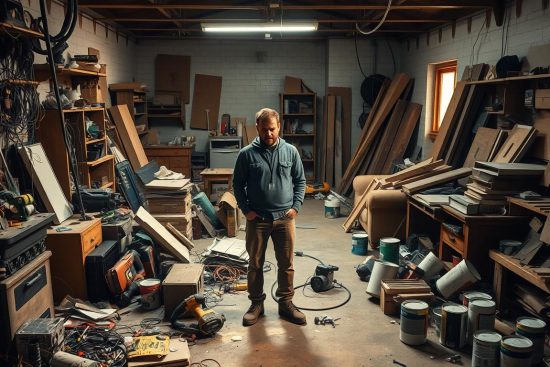Transforming part of your home into a welcoming retreat for visitors combines practicality with creativity. A well-designed private space offers more than just a place to sleep—it becomes a memorable experience that reflects your hospitality. Hosts often share how blending comfort with smart layouts helps visitors feel both independent and cared for.

Many homeowners face challenges like limited square footage or balancing privacy with shared areas. Community forums highlight solutions like multi-functional furniture or adding a small bedroom workstation. These insights show how thoughtful touches—like layered lighting or personalized decor—create warmth without sacrificing functionality.
Modern expectations demand more than basic accommodations. Today’s designs prioritize flexible layouts that adapt to short stays or extended visits. By incorporating real-world examples from experienced hosts, we’ll explore how to craft a space that impresses guests while streamlining your hosting routine.
Key Takeaways
- A dedicated retreat elevates hospitality while maintaining household privacy
- Balance comfort and style through multi-functional furniture and storage
- Smart layouts help maximize smaller areas without feeling cramped
- Community insights reveal common challenges and creative solutions
- Modern suites blend aesthetic appeal with practical daily use
Designing Your Dream Guest Suite
Creating a functional yet inviting space starts with smart planning. Focus on blending privacy with shared zones to make visitors feel at ease. Many hosts recommend using sliding doors or room dividers to separate the living area from private quarters—a trick popular in studio-style layouts.
Optimizing Layout for Living Areas and Privacy
Arrange furniture to create natural pathways. For example, position seating away from entry points to reduce foot traffic near rest zones. Airbnb hosts often use L-shaped sofas or foldable desks to maximize smaller rooms. Built-in storage under stairs or beds keeps clutter hidden while saving floor space.
Essential Bedroom, Bathroom, and Kitchenette Features
Prioritize comfort in the bedroom with blackout curtains and quality bedding. In bathrooms, install walk-in showers with nonslip tiles. Compact kitchenettes thrive with mini-fridges and microwave drawers—perfect for quick meals without sacrificing style.
| Feature | Purpose | Example |
|---|---|---|
| Multi-level lighting | Adapts to daytime tasks and evening relaxation | Dimmable wall sconces + task lamps |
| Pocket doors | Saves space in narrow areas | Barn-style sliding door for bathrooms |
| Vertical storage | Utilizes unused wall space | Floating shelves above beds |
One host shared, “Adding a charging station near the bedside table cut morning chaos.” These details transform basic rooms into a cohesive retreat that balances independence and convenience.
Incorporating Functional and Stylish Spaces
Blending versatility with aesthetics transforms any home area into a multi-purpose haven. Designers often use convertible elements that shift from cozy reading nooks to vibrant social hubs. “A room should evolve with your needs,” notes an interior designer from Austin, Texas.

Flexible Living Areas for Modern Home Comfort
Murphy beds with integrated desks maximize daytime productivity and nighttime rest. Daybeds paired with storage ottomans offer extra seating and hidden organization. One host shared, “Our convertible sofa-bed handles movie nights and overnight stays effortlessly.”
Smart Design Ideas for an Inviting Space
Sliding barn doors with frosted glass balance privacy and natural light. Built-in shelves double as room dividers, creating zones without closing off areas. Try these solutions:
- Nesting tables for adjustable surface space
- Wall-mounted fold-down desks in bedroom corners
- Magnetic boards for displaying art or notes
Multi-functional pieces like storage benches reduce clutter while adding seating. Neutral color palettes with bold accents keep spaces feeling fresh yet timeless. These strategies help maintain an organized environment that adapts to various activities.
Expert Tips for Enhancing Guest Hospitality
Crafting memorable stays requires balancing universal appeal with personalized touches. Designers and seasoned hosts emphasize creating adaptable rooms
Embracing Multigenerational Living Solutions
Open-plan layouts with convertible furniture work wonders for families. Consider daybeds with trundles for kids and wider doorways for stroller access. Non-slip bathroom flooring and lever-style handles appeal to older visitors. One host noted, “Installing motion-sensor night lights reduced midnight trips to unfamiliar spaces.”
Answering Common Design and Booking Questions
Address noise concerns with thick area rugs or soundproof curtains between shared walls. For tech-savvy travelers, include USB outlets and WiFi speed details in listings. A simple FAQ sheet in the bedroom covers house rules without awkward conversations.
Integrating Business and Home Trend Strategies
Blend Airbnb success tactics with home comfort by:
- Using durable, stain-resistant fabrics in high-traffic zones
- Displaying local artwork to boost regional charm
- Offering tiered pricing for weekday vs. weekend stays
Top-rated hosts often pair minimalist decor with bold accent walls—creating Instagram-worthy spaces that attract repeat bookings. These strategies turn temporary stays into cherished experiences.
Conclusion
Designing a welcoming retreat for visitors requires balancing smart layouts with personal flair. By prioritizing flexible living areas and intentional storage solutions, you create a space that feels both cozy and practical. Thoughtful touches like layered lighting or convertible furniture ensure every square foot serves multiple purposes.
Community insights reveal how dedicated zones for sleeping, relaxing, and dining streamline hosting routines. For example, integrating a basement guest suite with soundproofing and modular seating adapts to family gatherings or solo travelers. These strategies maintain your home’s flow while offering visitors independence.
Remember: successful designs address real-world needs. Non-slip bathroom tiles, USB outlets, and clear house rules reduce friction during stays. Whether updating a spare bedroom or converting underused areas, focus on durable materials and timeless color schemes that withstand frequent use.
Ultimately, your efforts create lasting impressions. A well-planned retreat reflects hospitality while enhancing your property’s value—proof that functional elegance never goes out of style.


